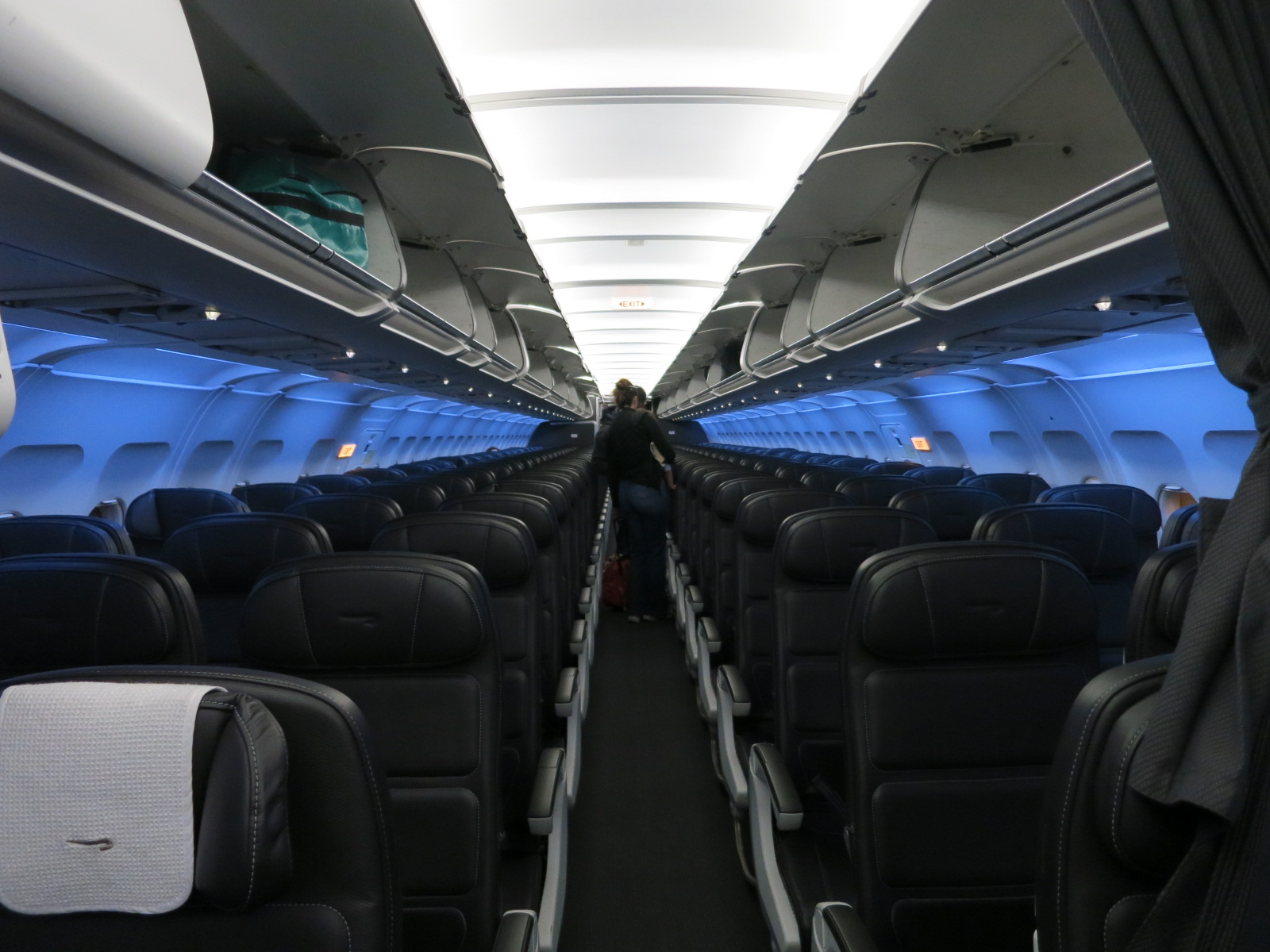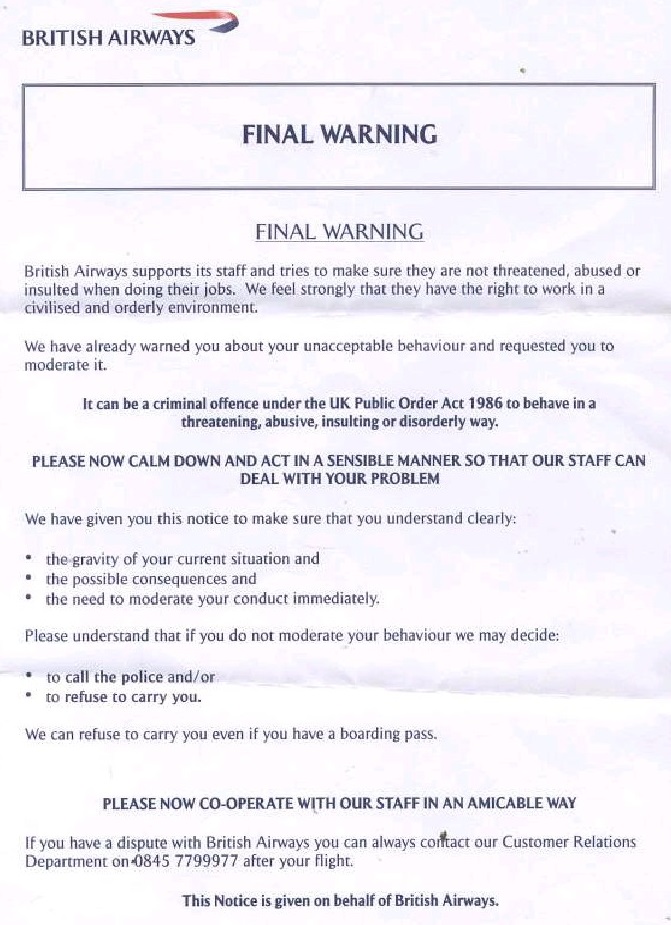There are plenty of stories about passengers behaving badly after drinking too much alcohol. I’ve often wondered about the way flying and drinking are connected.
In 1977 Southwest Airlines even became the largest liquor distributor in the State of Texas after adopting a two-tier fare structure (more expensive fares came with a takeaway bottle) to combat competition which was undercutting the carrier’s previous pricing as part of the Civil Aeronautics Board’s pre-deregulation ‘experimentation with price competition’.
Nearly every inflight disturbance involves alcohol. You’re certainly going to get in trouble for bringing your own.

Here’s what a British Airways ‘Yellow Card’ Looks Like:

You don’t often see flight crew drunk, but when you do it’s a big deal. I was much more concerned when this American co-pilot was arrested on suspicion of being drunk (a reader at the time asked, “Does this mean AA is back serving pre-departure drinks?”) than I did when when a British Airways flight attendant was identified as drunk because she was reading her book upside down or when this Alaska flight was delayed due to a drunk flight attendant.
Here’s a trick I picked up from Joseph Hazelwood, Captain of the Exxon Valdez (who – when his first mate told him about being ‘on the rocks’ – said, “no thanks matey, I’ll take mine straight up”): always carry People magazine, the pictures make it much easier to know which side is up when you need to bury your head in reading.
That was no help to the two United pilots who who showed up too drunk to fly or the Citilink pilot who was filmed stumbling through airport security and then taped slurring his predeparture announcement or the Canadian pilot who passed out in the cockpit and later blew a .24.
And it’s the pilots whose sobriety matters. There was even a Denzel Washington movie about this.
Still these are isolated incidents, only a few at most per airline. So it’s striking that thirty Air India pilots have been found to have been drinking in preflight tests since 2014. That’s still not a common occurrence but it’s too common.
One challenge is that pilots with an alcohol problem may be wary of speaking up and seeking help, for fear of being sidelined, despite programs designed to encourage them to do so. Pilots hide not just alcohol abuse but mental health conditions as well, and that points to a fundamental conundrum: you want pilots to be open and seek help in order to promote safety, but once they’re open they’re a clearly identified risk so the consequences of being open discourage that openness. Or at least that’s the fear many pilots have, not trusting any commitments to help rather than punish.


“You’re certainly going to get in trouble for bringing your own.”
This is certainly not true on British Airways. Passengers are welcome to BYOD
Who is actually surprised? Air India is one of the world’s shittiest airlines. Always has been. Always will be.
I had a feeling when reading the title it would be Air India, and wasn’t disappointed!
Not defending Air India but a little context helps — the threshold to qualify as ‘drunk’ for Indian pilots is 40x stricter than the US airlines (0.001% vs 0.04%). Secondly, in India, the entire crew is tested before each flight (or atleast, they’re supposed to be) whereas in the US, it’s a random check.
Having said, yep, Air India is a pretty crappy airline